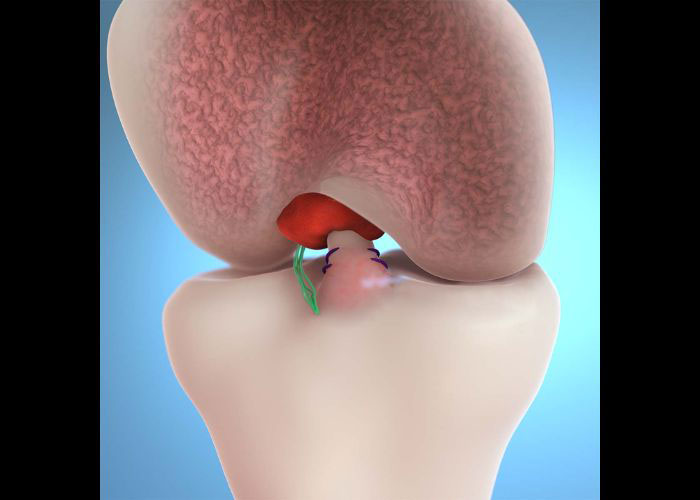What is ulnar nerve entrapment?
The ulnar nerve, one of three main nerves of the upper arm, travels through the narrow cubital tunnel located in the inner elbow to the forearm and fingers. This nerve can become easily compressed due to the limited size of the cubital tunnel and cause pain, tingling, and/or numbness of the pinky and ring fingers. The “shock-like” feeling associated with this condition is often identified as the feeling after hitting one’s “funny bone”. If left untreated, the forearm and fine motor muscles of the hand can start to atrophy and cause weakness.
What is the treatment for ulnar nerve entrapment?
Non-operative therapies may be sufficient when ulnar nerve entrapment does not impede the ability to perform activities of daily living. The symptoms associated with this condition can be managed with rest, padded extension towel splinting or elbow brace at night, and non-steroid anti-inflammatory medications (NSAIDs). However, for patients with severe ulnar nerve compression or muscle atrophy, or when conservative therapies fail, surgical intervention is frequently necessary. The goal of surgery is to alleviate pressure on the ulnar nerve by increasing the amount of space available for movement. Dr. Ronak Mukesh Patel, orthopedic elbow doctor, treats patients in Sugar Land, Pearland, and the Houston, Texas area, who have experienced ulnar nerve entrapment and are in need of surgical repair.

How is ulnar nerve decompression performed?
Dr. Patel will review several factors, such as the patient’s age, medical history, job duties, and current symptoms to determine the best surgical approach. Ulnar nerve decompression is performed as an outpatient procedure. An incision is created over the medial epicondyle for Dr. Patel to gain access to the ulnar nerve. When the ulnar nerve is identified, the surrounding bony and soft tissue structures are methodically examined for any abnormalities. The ligamentous sleeve that forms part of the cubital tunnel is then cut and divided to increase the size of this tunnel. Any other sites of nerve compression are systematically released until complete nerve decompression is achieved. This surgical technique is known as a cubital tunnel release and is most appropriate for patients with a stable ulnar nerve that experience mild to moderate symptoms.
How is ulnar nerve transposition performed?
Dr. Patel may determine an ulnar nerve transposition is more appropriate than ulnar nerve decompression. This is typically for severe cases, nerve instability or revision (redo) surgeries. Once the ulnar nerve is identified and exposed, the nerve is repositioned in a more anterior (front) location of the elbow. The nerve can be situated under the muscle (submuscular), within the muscle belly (intermuscular), or on top of the muscle under the skin (subcutaneous). Repositioning of the ulnar nerve prevents it from becoming compressed or entrapped in the cubital tunnel.
What is the recovery period like after ulnar nerve decompression or transposition?
The recovery period is not greatly impacted by the specific surgical technique performed as both methods result in a similar recovery time. However, the recovery process can be significantly affected by the patient’s willingness to comply with the post-operative care instructions provided by Dr. Patel. Most patients can expect a full recovery in approximately 2 to 3 months. Patients in Sugar Land, Pearland, and the Houston, Texas area can anticipate the following:
- A splint is applied immediately following surgery and remains for 7 to 10 days.
- Non-steroidal anti-inflammatory medications (NSAIDs) are usually sufficient to manage any post-operative pain and/or inflammation. If these symptoms still persist with over-the-counter pain medications, Dr. Patel can prescribe stronger pain medication to be taken as directed.
- Physical therapy can be expected to begin within 5 to 7 days after surgery. The goal of physical therapy is to restore mobility by improving strength and range of motion to the forearm and hand muscles.
- In the event of severe ulnar nerve entrapment, occupational therapy may be added to regain fine motor skills.
Ulnar Nerve Decompression Surgeon

Have you been diagnosed with Ulnar Nerve Entrapment in the elbow? If so, you may need an ulnar nerve decompression or ulnar nerve transposition. Ulnar nerve surgeon, Doctor Ronak Mukesh Patel, provides diagnosis as well as surgical and nonsurgical treatment options for patients in Houston, Sugar Land, and Pearland, TX who have been diagnosed with an ulnar nerve entrapment. Contact Dr. Patel’s team today!








